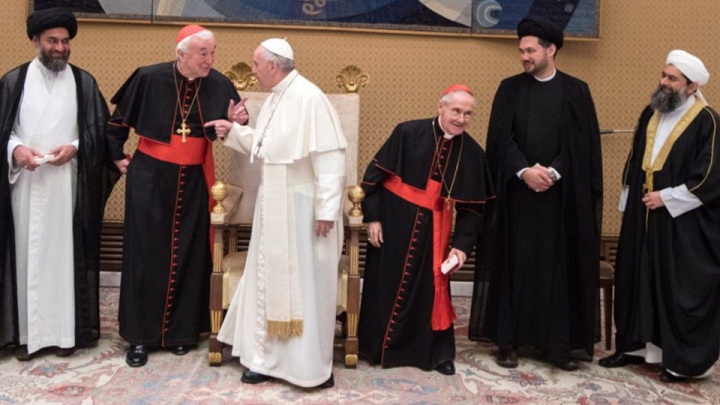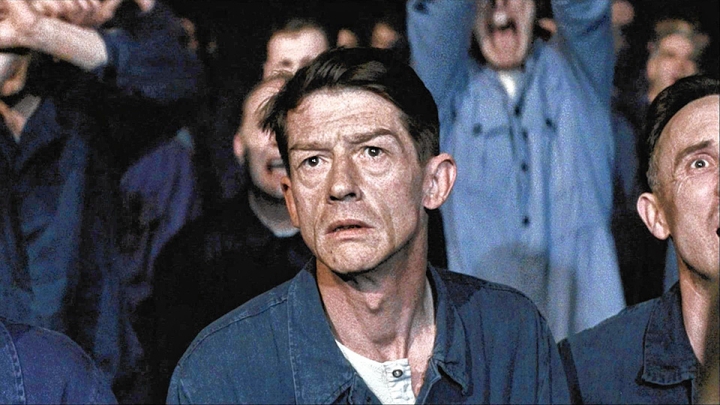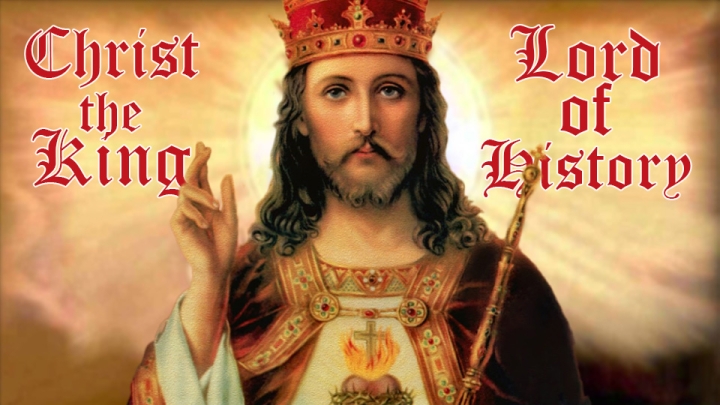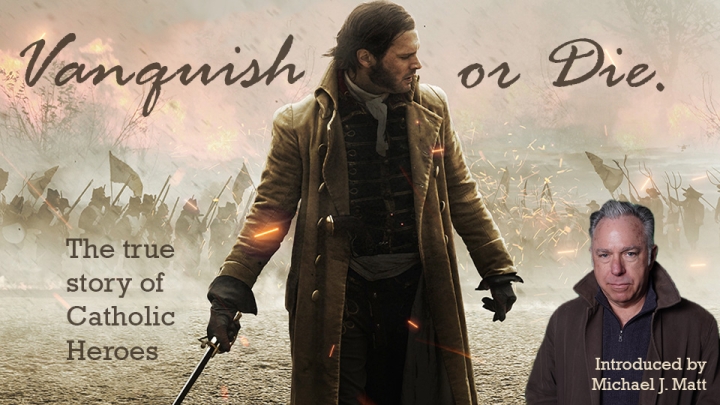Remnant Articles
One of the most fiercely debated issues in the entire history of the Christian Church is that of the status of sacred images. Regardless of the details and historical episodes of this dispute, its primary reference is always the third commandment of the Decalogue transmitted to us by God through Moses:
“Thou shalt not make to thyself a graven thing, nor the likeness of any thing that is in heaven above, or in the earth beneath, nor of those things that are in the waters under the earth” (Exodus 20:3).
At first glance, this article of the Decalogue seems to prohibit any sacred image. However, the mere presence on the ark of the law of the “two cherubims of beaten gold” (Exodus 25:18), as well as other similar examples from the Old Testament, show us that, in fact, it is not about an absolute prohibition. In this sense, Bishop Richard Challoner (1691–1781), in his commentary on this point, states the following:
“All such images, or likenesses, are forbidden by this commandment, as are made to be adored and served; according to that which immediately follows, thou shalt not adore them, nor serve them. That is, all such as are designed for idols or image-gods, or are worshipped with divine honour. But otherwise images, pictures, or representations, even in the house of God, and in the very sanctuary so far from being forbidden, are expressly authorized by the word of God. (See Ex. 25:15, and etc.; chap. 38:7; Num. 21:8, 9; 1 Chron. or Paralip. 28:18, 19; 2 Chron. or Paralip. 3:10).”
Despite the fact that such clear explanations have always existed in Christian Tradition, the great iconoclastic crisis in the Byzantine world, which unfolded in the 8th and 9th centuries AD, could not be prevented. Although it ended by emphasizing the lawful use of sacred images in churches in the Second Council of Nicaea (787), whose teachings were developed under the influence of great theologians such as the saints John of Damascus (c. 675 or 676–749) and Theodore the Studite (759–826), the debate was reignited by the spread of Protestant heresies. Today, under the strong influence of the liturgical revolution (i.e., protestantization), numerous churches suffer from three major symptoms of this misunderstanding of the Decalogue.
It is absolutely necessary, in a context where we are still accused of idolatry (especially by neo-Protestants), to know the teachings of the Church. Thus, besides deepening our own faith, we may perhaps succeed in combating erroneous (i.e., heretical) opinions.
The first, the most serious, is manifested by the almost complete exclusion of sacred images from post-conciliar Catholic churches. While this phenomenon is less noticeable in countries where older churches are still in use, in places where new churches are built, they are often devoid of religious icons. During my early travels in the United States, in New York, Phoenix, and Cary, I saw for the first time Catholic churches where there were no religious images whatsoever. Without exception, they resembled more conference halls or sports venues and had only a single crucifix above or behind the altar. Occasionally, a few statues of better-known saints like Teresa of Lisieux and Padre Pio could be found. Otherwise, there were no sacred images.
A second symptom, equally widespread though not necessarily as severe, consists of replacing images that adhere to the old canons of sacred aesthetics with naturalistic or even post-modern and abstract religious paintings. Often of questionable quality, these paintings make visible the third symptom, namely, the lack of attention to the true requirements of beauty in religious representations. In short, most paintings of this kind are ugly. Often they border on kitsch, as exemplified by the creations of Marko Ivan Rupnik, for instance. Opposed to all these symptoms, the presence of authentic Christian religious art, truly beautiful, is the defining element of authentic Catholic Tradition. It is enough to look at the images from the 18th edition (1915) of the Roman Missal printed by Friedrich Pustet’s printing house to see what respect for the beauty of holy beings and things means.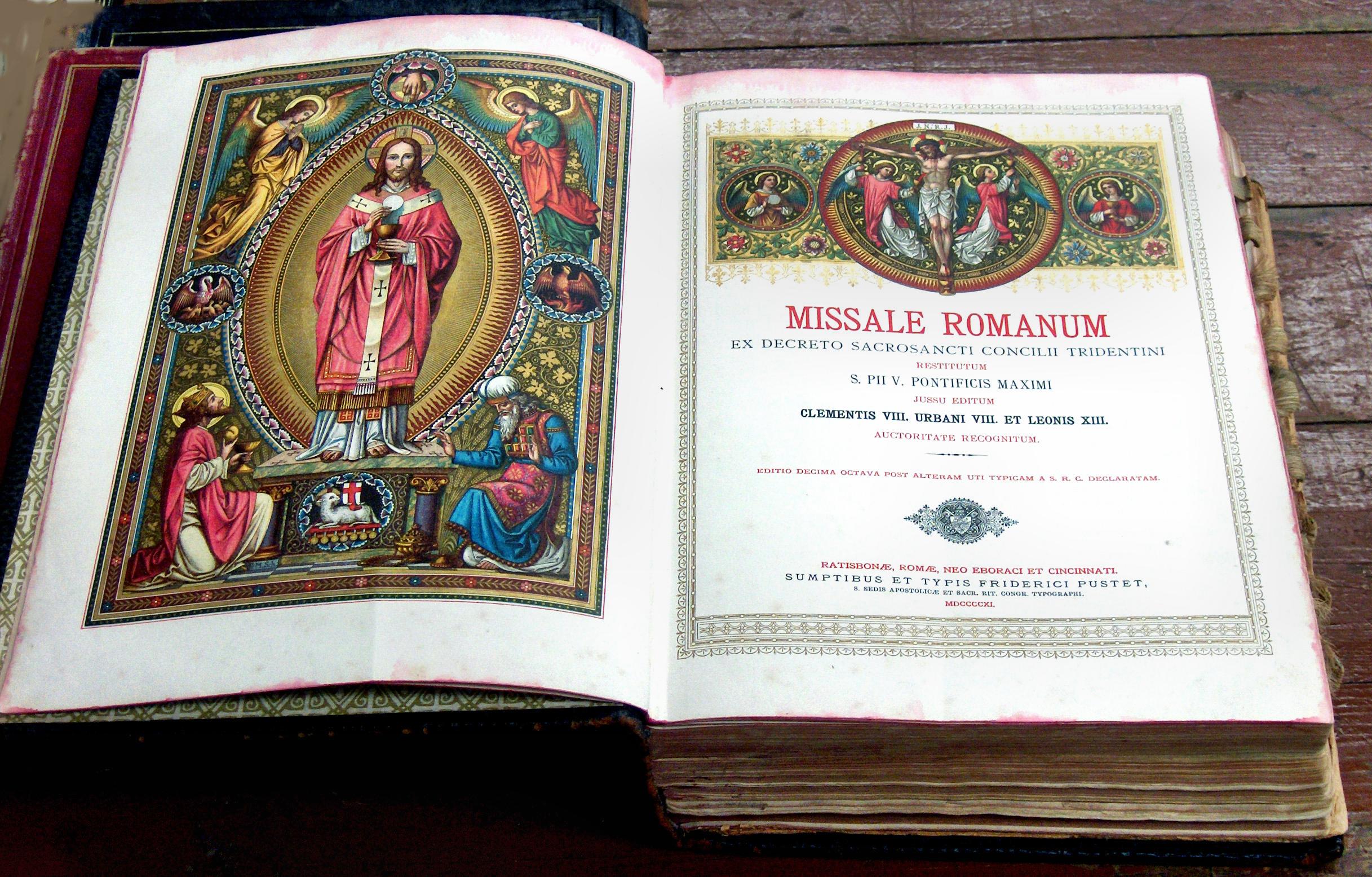
Considering all these aspects related to the liturgical revolution triggered by the eclipse of traditional Christian faith, the first thing I will say is that all deviations originate from the confusion between idol (Greek εἴδωλον) and icon (Greek εἰκών). Bishop Challoner’s explanation is precisely based on the difference between the two entities. It is absolutely necessary, in a context where we are still accused of idolatry (especially by neo-Protestants), to know the teachings of the Church. Thus, besides deepening our own faith, we may perhaps succeed in combating erroneous (i.e., heretical) opinions.
In the world of the Old Testament, which suffered the consequences of the original sin of Adam and Eve, the face of God was hidden from humanity. It was only through the Incarnation of the Son of God that this face became visible again. Therefore, the appearance of icons in the early centuries of the Christian era marks the extraordinary difference between the two worlds.
As I have already mentioned, the main argument invoked by those who reject icons comes from the Old Testament. Starting from the third commandment of the Decalogue, it has been assumed that even in the context of Christianity, religious images have no place in religious worship. Behind this attitude lies a grave error. An error that, in fact, implicitly denies the Incarnation of the Divine Logos – the second Person of the Holy Trinity, Savior Jesus Christ – and the extraordinary consequences of this epochal historical event. This is why the iconic representation par excellence is not that of the Virgin Mary, nor are those of the saints and angels of God. The central representation (i.e., icon) of the entire Christian iconographic program is that of our Savior Jesus Christ. Of course, all other sacred images that represent Him as God-man are equally legitimate, but the latter occupies an exceptional role due to the fact that the second person of the Holy Trinity became man by assuming in His person, alongside the divine nature, the human nature.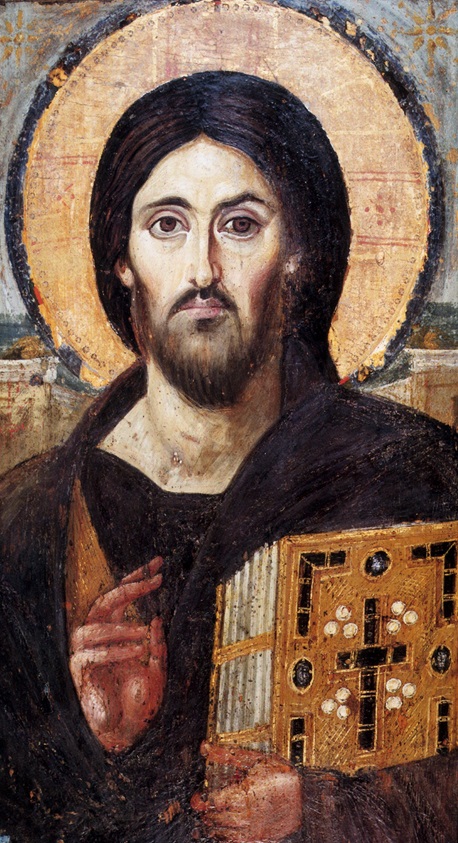
In the world of the Old Testament, which suffered the consequences of the original sin of Adam and Eve, the face of God was hidden from humanity. It was only through the Incarnation of the Son of God that this face became visible again. Therefore, the appearance of icons in the early centuries of the Christian era marks the extraordinary difference between the two worlds: the old one, before Christ, which did not have access to the Kingdom (the gates being guarded by cherubim with a flaming sword), and the new one, for which the Kingdom is once again accessible and God has become visible through His Incarnation from the Virgin Mary.
Considering this essential point, the Church has defended sacred images from ancient times. What it has actually defended is the realism of God’s Incarnation, the fact that this absolutely extraordinary event is not a fiction but a crucial historical truth. One of the most important teachings was expressed within the Second Council of Nicaea (787):
“As the sacred and life-giving cross is everywhere set up as a symbol, so also should the images of Jesus Christ, the Virgin Mary, the holy angels, as well as those of the saints and other pious and holy men be embodied in the manufacture of sacred vessels, tapestries, vestments, etc., and exhibited on the walls of churches, in the homes, and in all conspicuous places, by the roadside and everywhere, to be revered by all who might see them. For the more they are contemplated, the more they move to fervent memory of their prototypes. Therefore, it is proper to accord to them a fervent and reverent veneration, not, however, the veritable adoration which, according to our faith, belongs to the Divine Being alone – for the honor accorded to the image passes over to its prototype, and whoever venerate the image venerate in it the reality of what is there represented.”
When a mother kisses the photograph of her son who has gone to war, she does not “venerate” the material from which the photograph is made. This is exactly the sense in which the faithful kiss and honor icons: they mark through these gestures a profound communion with the divine persons represented.
So sacred images can and should be venerated. But we must understand exactly the nature of the gestures of venerating icons (adoration is reserved exclusively for God). We do not venerate the material from which the icon is made (wood, ceramic, canvas, etc.), just as we do not venerate the paints with which it is painted. In fact, we honor the persons from the unseen world who are represented, by similarity, in icons. This is the true meaning of veneration. In a well-known example, it is emphasized that when a mother kisses the photograph of her son who has gone to war, she does not “venerate” the material from which the photograph is made. What normal person would do such a thing? The kiss is, in fact, a gesture of communion with the person represented in that photograph. This is exactly the sense in which the faithful kiss and honor icons: they mark through these gestures a profound communion with the divine persons – the “prototypes,” as the Second Council of Nicaea says – represented.
Finally, there is another aspect regarding the importance of images: they educate us. They teach us the truths of faith. In a world flooded with profane images, we need sacred images more than ever. Unlike the profane and often profane images of today’s media culture, icons are true windows to the heavenly Jerusalem, where in the bosom of the Triune God – the Father, the Son, and the Holy Spirit – dwell all the angels and saints, upon whom shines the beauty of she who “has been raised above the cherubims, and has become higher than the seraphims” – the Holy Virgin Mary.
One of the great defenders and teachers of the iconoclastic cult, Saint John of Damascus, expressed with very beautiful words this reality of nurturing and growing the soul through sacred icons:
“The beauty of the images moves me to contemplation, as a meadow delights the eyes and subtly infuses the soul with the glory of God.”
Latest from RTV — CHRIST is KING: Candace Owens Is Right
According to Francis, all religions (other than unadulterated Catholicism) are worthwhile and can contribute to the common good and the promotion of peace.
Francis’s False Peace Depends Upon Eclipsing the True Faith
By: Robert Morrison | Remnant ColumnistChrist is the goal of human history; He is the focal point of the longings of history and of civilization; He is the center of the human race; He is the joy of every heart and the answer of all its yearnings; He is the Alpha and Omega, the first and the last, the beginning and the end; and it is the Church’s “single intention” that God’s kingdom may come. Thus says Vatican II, and yet the “great defenders of Vatican II” persecute Traditional Catholics because we assert that Christ is King.
Francis and His Collaborators Reject More of Vatican II Than Traditional Catholics Do
By: Robert Morrison | Remnant ColumnistNew from Remnant TV...
In this edition of the Underground, Michael presents a tour de force on the Doctrine of the Social Kingship of Jesus Christ. Responding to the avalanche of attacks on political commentator Candace Owens – fired from the Daily Wire for proclaiming Christ King – Michael addresses all the arguments, including those based on the canard that when Christ said to Pilate “my kingdom is not of this world, He was in fact rejecting His own sovereignty over nations and individuals. This, according to Michael, is heresy and it is also exactly why the scourges of abortion and same sex “marriage” are now the law of our land.
In this RTV Short, we offer a snapshot of old-world Christianity. It's Holy Week and this is still how it is celebrated in the streets of many cities in Spain.
I offer this video as a touching example of what we've nearly lost, have not lost yet, and must see fully restored one day. The New World Order hates everything this represents, but they have nothing to replace or rival it.
Brief Introduction by Michael J. Matt
In light of the recent attack on Candace Owens, I have decided to share a few excerpts from the late, great Michael Davies's 2002 Remnant article, "The Reign of Christ the King." The article is too comprehensive (and likely too long) to be easily comprehended by the vast majority of the Neo-Catholic critics of Candace Owens, men and women who through no fault of their own suffer from a near total lack of sound Catholic formation. So, the following will have to suffice for the moment. I will address this issue in the next Remnant Underground but let me just say this much: That this should be happening during Holy Week is no accident. The attack on Candace Owens speaks to the reality that the attack on the Social Kingship of Jesus Christ has always been at the heart of this Revolution — even more so than the attack on the Latin Mass itself, which in the final analysis was little more than a symptom of a global war on Christ the King. More to follow. Long live Christ the King! MJM
“And the governor answering, said to them: Whether will you of the two to be released unto you? But they said, Barabbas. Pilate saith to them: What shall I do then with Jesus that is called Christ? They say all: Let Him be crucified.” (Matthew 27:21-22)
Francis and His Supporters Celebrate with Barabbas and Demand the Crucifixion of the Mystical Body of Christ
By: Robert Morrison | Remnant ColumnistThe main reference point of our lives, therefore, is the Cross. It is what helps us traverse the tumultuous ocean of the “world” like a lifeboat. It is what protects us from the fire of passions and vices through its fireproof qualities, similar to cork wood. At the same time, with the image of the monk tied to the mast floating at the mercy of the waves before our eyes, we understand that without it, we would sink immediately.
New from Remnant TV...
Why are The Remnant and the Catholic Identity Conference teaming up with the Confraternity of Our Lady of Fatima to bring the Latin Mass to Mount Kilimanjaro?
Guaranteeing a global right to abortion – Dr. Ted’s Pandemic Preparedness Treaty exposed for trying to permanently enshrine abortion as a basic human right worldwide. No wonder the Africans, among many, are resisting it.
NFL Player Scolds Cardinal Dolan, Irish PM Resigns in Disgrace, Congressman Exposes WHO Treaty’s Pro-abort Agenda
By: Michael J. Matt | EditorThis film tells a story from the French Revolution. The Revolution was a godless New Order born from the Enlightenment, which brutalized the established, Christian way of life with its deeply ironic motto: “Liberty, Equality, Fraternity”.



